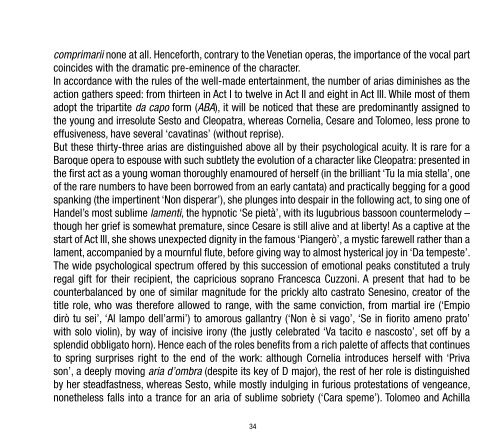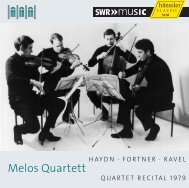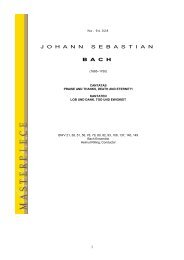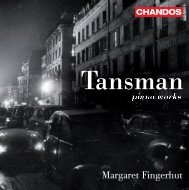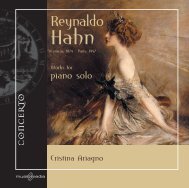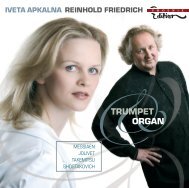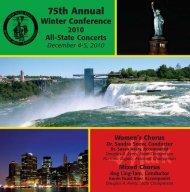giulio cesare - Naxos Music Library
giulio cesare - Naxos Music Library
giulio cesare - Naxos Music Library
Create successful ePaper yourself
Turn your PDF publications into a flip-book with our unique Google optimized e-Paper software.
comprimarii none at all. Henceforth, contrary to the Venetian operas, the importance of the vocal part<br />
coincides with the dramatic pre-eminence of the character.<br />
In accordance with the rules of the well-made entertainment, the number of arias diminishes as the<br />
action gathers speed: from thirteen in Act I to twelve in Act II and eight in Act III. While most of them<br />
adopt the tripartite da capo form (ABA), it will be noticed that these are predominantly assigned to<br />
the young and irresolute Sesto and Cleopatra, whereas Cornelia, Cesare and Tolomeo, less prone to<br />
effusiveness, have several ‘cavatinas’ (without reprise).<br />
But these thirty-three arias are distinguished above all by their psychological acuity. It is rare for a<br />
Baroque opera to espouse with such subtlety the evolution of a character like Cleopatra: presented in<br />
the first act as a young woman thoroughly enamoured of herself (in the brilliant ‘Tu la mia stella’, one<br />
of the rare numbers to have been borrowed from an early cantata) and practically begging for a good<br />
spanking (the impertinent ‘Non disperar’), she plunges into despair in the following act, to sing one of<br />
Handel’s most sublime lamenti, the hypnotic ‘Se pietà’, with its lugubrious bassoon countermelody –<br />
though her grief is somewhat premature, since Cesare is still alive and at liberty! As a captive at the<br />
start of Act III, she shows unexpected dignity in the famous ‘Piangerò’, a mystic farewell rather than a<br />
lament, accompanied by a mournful flute, before giving way to almost hysterical joy in ‘Da tempeste’.<br />
The wide psychological spectrum offered by this succession of emotional peaks constituted a truly<br />
regal gift for their recipient, the capricious soprano Francesca Cuzzoni. A present that had to be<br />
counterbalanced by one of similar magnitude for the prickly alto castrato Senesino, creator of the<br />
title role, who was therefore allowed to range, with the same conviction, from martial ire (‘Empio<br />
dirò tu sei’, ‘Al lampo dell’armi’) to amorous gallantry (‘Non è si vago’, ‘Se in fiorito ameno prato’<br />
with solo violin), by way of incisive irony (the justly celebrated ‘Va tacito e nascosto’, set off by a<br />
splendid obbligato horn). Hence each of the roles benefits from a rich palette of affects that continues<br />
to spring surprises right to the end of the work: although Cornelia introduces herself with ‘Priva<br />
son’, a deeply moving aria d’ombra (despite its key of D major), the rest of her role is distinguished<br />
by her steadfastness, whereas Sesto, while mostly indulging in furious protestations of vengeance,<br />
nonetheless falls into a trance for an aria of sublime sobriety (‘Cara speme’). Tolomeo and Achilla<br />
34


